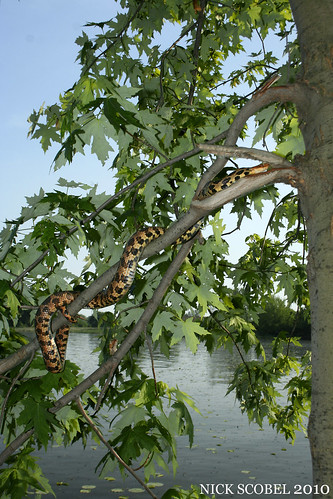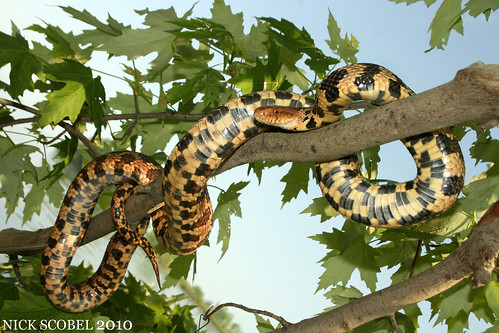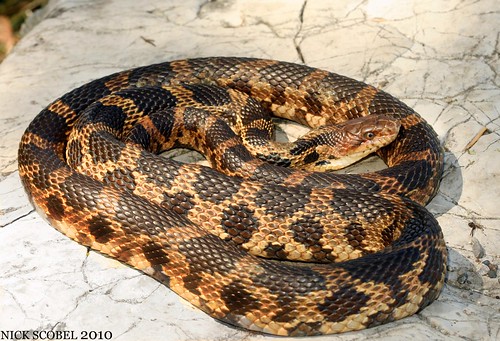Eastern Fox Snake - Pantherophis gloydi
Coastal Marsh is an herbaceous wetland community occurring statewide along the shoreline of the Great Lakes and their major connecting rivers. Vegetational patterns are strongly influenced by water level fluctuations and type of coastal feature, but generally include the following: a deep marsh with submerged plants; an emergent marsh of mostly narrow-leaved species; and a sedge-dominated wet meadow that is inundated by storms. These areas are often bordered by lakeshore, or by riparian areas (rip-rap) that provides shelter for these large constrictors. A recent study done by Kile Kucher of Central Michigan University found that Eastern Fox Snakes chose rip-rap almost 80% of the time in his telemetry study on spatial ecology of the species.
Here you can see an adult Eastern Fox Snake coiled among rip-rap while taking cover amongst some ivy on a sunny morning in June. Although Fox Snakes are large in size (3-5 feet), they can extremely difficult to find at a given time. Studies have shown that this species moves frequently and can cover great distances in a single day. Males tend to move more than females, but both sexes are extremely active snakes. They spend the majority of their time on the hunt for rodents, birds, and other snakes. At certain times of the year, Eastern Fox Snakes can be found near nesting rookeries for various shorebird species as they like to target fledglings of herons, gulls, and egrets. Although they are found at ground level, they are excellent climbers as they search for birds and other food items, such as this large individual I found scaling a tree.
They are an impressive snake to be sure, but are in constant need of constant conservation and management. Fox Snakes are often found in extremely developed areas of southeast Michigan and are often run over by motorists or killed intentionally by ignorant people who thing they are rattlesnakes. Although they do hold their ground, hiss, and vibrate their tail against leaf litter if they are cornerned, Fox Snakes are not an aggressive species would rather be left alone. If you happen to come across one in the field, leave it be and only take photographs from a distance.







Any chance one could've made it's way to Jackson County WI? We're a ways from MI, but I swear that's what visited my girls' swing set this evening.
ReplyDeleteTook pictures of one of these today in Mid-Michigan area. Scared me-they way it was making the dead leaf rattle.
ReplyDeleteWe just found one in St Charles. Where are you located?
DeleteI found one living between a loose brick and wall under our deck. We live a few blocks from the Lake Erie metro park
ReplyDelete